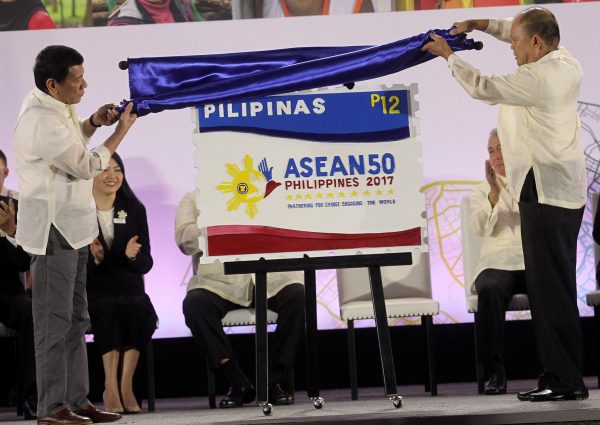While ASEAN’s ten members are foreordained to hang together under the framework of the ‘ASEAN way’ rather than hang separately, there is little understanding of why they do remain intact in such a position. Some even argue that ASEAN merely reflects how the member states ‘think nationally, talk regionally and act bilaterally’ due to the lack of pooled sovereignty and overreliance on unanimous decision-making.
The clue to this ‘ASEAN miracle’ lies in the norms it has ingrained, specifically the much-touted ‘regional resilience’. Its manifestation is like a chain, whose overall strength is derived from the strength of its constituent elements. Stipulated in the 1977 Kuala Lumpur Declaration and the 2008 ASEAN Charter, ‘regional resilience’ means that member states pledge a resolute capacity to wrestle with internal threats in order to enable national development and contribute to overall regional peace and prosperity. This ‘chain’ has created the conditions for remarkable progress through ASEAN’s three main phases of its development.
First, ASEAN’s genesis took shape in August 1967 when security and stability in the region had a grave outlook. Disregarding the wide divergence of political systems and cultural outlook, the five founding members (Indonesia, Malaysia, the Philippines, Singapore and Thailand) eagerly established an exclusive organisation to further regional security and stability. Having staunchly emphasised the positive value of cooperation, inter-state tensions subdued and there hasn’t been a war between member states since.
Second, though its norms of informality and consensus-building are prone to criticism, ASEAN has successfully converted its foes into friends, and shifted a state of enmity into one of amity. It initially acted as a bulwark against the spread of communism, but astonishingly then embraced a communist Vietnam. Moreover, not only did ASEAN contain Vietnamese ambitions in invading Cambodia, but it also found the best deal in growing a ‘we feeling’ between Vietnam and Cambodia as both inked ASEAN membership. It became a more inclusive organisation — expanding its membership as well as claiming eligibility as the sole regional organisation that truly represented ‘the entire Southeast Asia’.
Third, in tandem with the end of the Cold War, ASEAN sought open regionalism, and unveiled itself as an accelerant of regional integration. It set the tone that peace in Southeast Asia is indivisible in nature, and cannot be achieved without a firm commitment on economic integration and cooperative security. In 1992, ASEAN member countries implemented the ASEAN Free Trade Area and witnessed the establishment of ASEAN+3 and the Chiang Mai Initiative.
ASEAN has also engaged with politically sensitive East Asian countries by pledging opportunities for economic integration as well as filling the void in terms of political dialogues and collective security through the ASEAN Regional Forum (ARF). The ARF even welcomed the participation of North Korea as a member, establishing itself as the only security forum that assiduously provided the opportunity of confidence building among member states, major powers and North Korea.
Nevertheless, to create another 50 years of miracles ASEAN must bear in mind that its ‘chain’ is being challenged. ASEAN celebrates its birthday at a time when geopolitics is rife with uncertainty: Trump’s unpredictable Asia policy, the North Korea nuclear threat, greater tensions in cross-Strait relations, Chinese assertiveness and Japan’s complex political pursuits in the region. Yet beyond the extra headwind, ASEAN still prevails as East Asia’s ‘single fighter’ for regionalism, whose members and neighbours put much hope in its multilateralism.
ASEAN ‘centrality’ is pervasive. The remaining regional collaborative forums and agreements are all ASEAN-centric. In the absence of an organisation truly representative of East Asia, ASEAN has the East Asia Summit and the ARF, where China and Japan sit at the same table. When the ratification of the TPP fell short of expectations, the on-going deals of the Regional Comprehensive Economic Partnership filled the void. In line with that, the Chiang Mai Initiative Multilateralisation is continuing to grow in size and importance, whereas the Manila Framework Group (under the auspices of APEC) did not live up to expectations.
To make a stronger chain, ASEAN is expected to ensure the pragmatism of member states: their pursuits of foreign policy should not reach the level of abandoning ASEAN. Increasingly energised bilateralism and divisive acts in the South China Sea might marginalise ASEAN legitimacy. ASEAN should not lose sight of the fact that it is wielding a set of assets to consolidate the region economically while accommodating great power politics.
ASEAN must prove its mettle by making its development initiatives complement each other and by being a constructive engine for regional order building. ASEAN must also emphasise that neither Japan nor China can dominate the region, nor can the US —particularly under Trump — belittle ASEAN’s prominence in the region.
Trissia Wijaya is a MEXT scholar at the Graduate School of International Relations, Ritsumeikan University, Japan.

